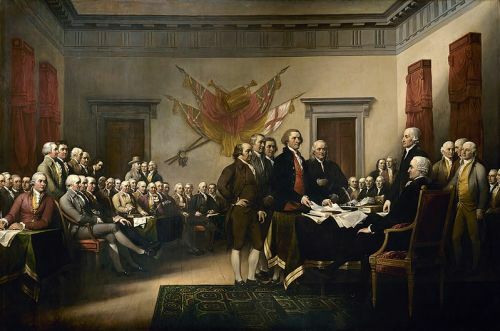You've probably heard of the Middle Ages as being culturally dominated by religion, casting a shadow over the arts and sciences, preventing them from flourishing freely. This idea considered the Middle Ages as the Age of darkness. But do you know why this period of history has been called that?
The word average indicates something that is in an intermediate position. For eighteenth-century thinkers known as illuminists, this period of history was located between Classical Antiquity, which ended with the conquest of Rome by the Heruli, in 476, and the Modern Age, of which they were a part, which began with the conquest of the city of Constantinople by the Ottoman Turks in 1453.
This was a way of seeing the world based on European history, disregarding other regions of the planet. This type of thinking was called Eurocentrism, as it placed the European continent at the center of analysis. These eighteenth-century thinkers ignored what had happened in other regions of the planet such as the Islamic Empire, the Americas or even China.
In addition, during the Renaissance, it was called the Middle Ages of the Dark Ages by the fact that the Renaissance placed themselves as heirs of the thought and science developed by the Greeks and Romans, giving rise to the culture of Antiquity. For the Renaissance, during the Middle Ages, the arts and sciences, compared to antiquity, had declined. The responsibility for this would be largely the responsibility of the Catholic Church, which politically, economically and culturally dominated Europe at that time. Religious domination would have impeded the development of reason, creating an era of backwardness and primitivism.
For the enlightened ones of the Renaissance, the Middle Ages was the time of darkness, of shadows, it was the Dark Ages.
But from the 19th century on, this way of understanding the period was changing, especially with the artistic movement known as Romanticism, which revalued medieval elements. Later, some historians, such as Henri Pirenne and Marc Bloch, began to study the period and produce historical works that showed that they existed during the Middle Ages. technological development in agriculture and crafts, as well as the creation of its own architecture and the encouragement of the dissemination of knowledge through the creation of schools and universities.

Gothic building in Prague, Czech Republic. Contrary to what its detractors claimed, the Middle Ages developed a quality architecture
In this case Eurocentrism also prevented the Renaissance from realizing the development of mathematics and astronomy performed by the Muslims, which even made it possible to carry out the great European navigations. In relation to the American societies that developed before Columbus' arrival on the continent, such as the Mayans, Aztecs and Incas, there were large constructions urban areas that impressed the conquerors, as well as the use of hygiene habits unknown by Europeans and much healthier than those practiced by they.
The terms Age of darkness and even Middle Ages they are loaded with historical prejudices. The first is possible to no longer be used. On the other hand, the term Middle Ages, due to its wide diffusion, is still used by almost all historians, and its use is therefore current.
By Tales Pinto
Graduated in History

